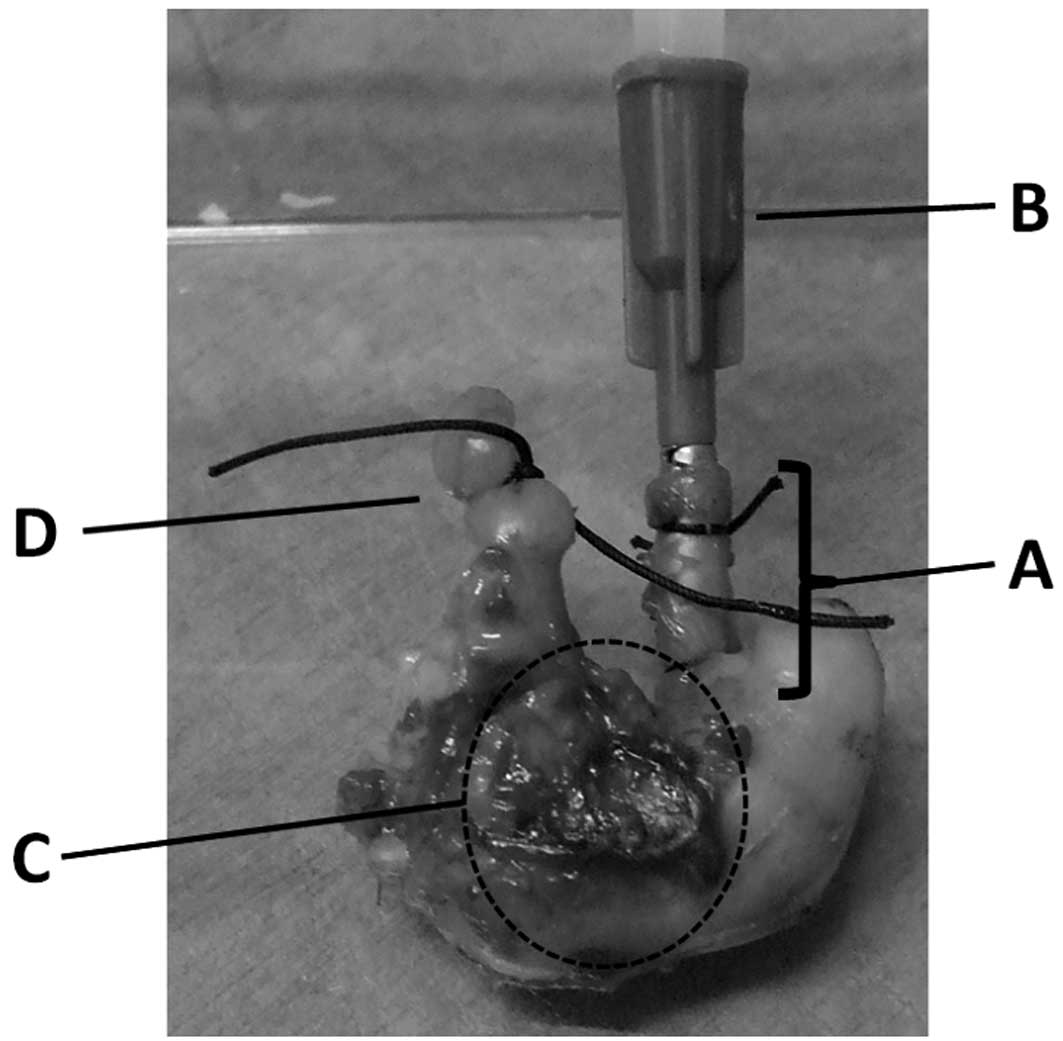Changes in bowel mucosal permeability and wound healing after neoadjuvant chemotherapy
- Authors:
- Published online on: January 1, 2010 https://doi.org/10.3892/ol_00000030
- Pages: 161-165
Metrics:
Total
Views: 0 (Spandidos Publications: | PMC Statistics:
)
Total PDF Downloads: 0 (Spandidos Publications: | PMC Statistics:
)
Abstract
Neoadjuvant chemotherapy (NAC) with 5-fluorouracil (5-FU) and cisplatin (CDDP) is a promising approach for locally advanced gastric cancer. We investigated the influence of NAC with 5-FU/CDDP on the permeability of intestinal mucosa and wound healing. Male Sprague Dawley rats were divided into four groups (n=6). Group 1 received saline (control group) and Groups 2-4 were administered preoperative 5-FU/CDDP (NAC groups). The NAC consisted of daily intraperitoneal administration of 5-FU from day 1 to 5 and from day 8 to 12 and intravenous administration of CDDP on days 2 and 9. The rats underwent gastrotomy (1.0 cm) with a laparotomy of 3 cm in length, under general anesthesia. Seven days after surgery, the rats were orally administered with phenolsulfonphthalein (PSP), and the 24-h urinary excretion of PSP was quantified. On postoperative day 8, the bursting pressure (BP) of the gastric suture line and the tensile strength of the abdominal wound were measured. The hydroxyproline (HP) content in the tissue of the abdominal suture line was then measured, and the number of fibroblast cells in the tissue of the gastric suture line was calculated by histopathological examination. The PSP urinary excretion rate was significantly higher in Group 2 in comparison with the other groups (P<0.05), while the BP of a selected gastrorrhaphy region was significantly lower in Group 2 (P<0.05). No significant differences were noted in the HP content. NAC with 5-FU/CDDP disturbs the healing of intestinal anastomoses when the interval between chemotherapy and surgery is insufficient. Neither HP content nor fibroblast counts were correlated with BP. Consequently, NAC appeared to affect the remodeling of collagen fiber. Thus, the integrity of the intestine may play a role in intestinal wound healing.











